
My Way: Violin Construction From Start to Finish
PART III: CARVING AND SHAPING
The violin top, back and ribs have been cut out. Real time consuming and tedious hours of work are looming ahead. I will put in 30 hours carving out the top and back (the number of hours varies according to instrument size) shaping each piece inside and out roughly like a shallow canoe.
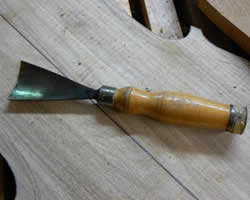

On the left, a very big gouge used to start things off. As the arching is developed, progressively smaller planes are used.
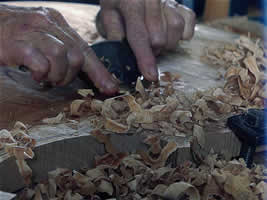
Wood chips and curls pile up as Anne works on the arching of a cello. Wood can easily be cut away but can never be put back.
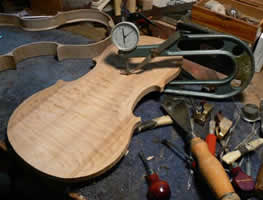
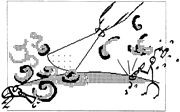
The back and the top are painstakingly graduated in millimeters ranging from 4.5–2.5 mm for the back to 3–2.5 mm for the top. In both top and back, the thickest part is in the center.
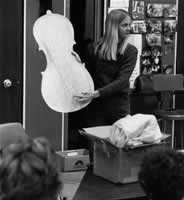

During the graduation process a tricky procedure influences the final thicknesses of the top and back. In the midst of painstakingly scraping bits of wood away here and there, the plates are constantly "bonked on" with the forefinger or knuckle. The maker does this to test for the tap tone. This step consumes many hours. When a ringing bell-like tone is finally obtained for each plate, then the process is complete. In the photo above, Anne explains to a seventh grade music class how to tap a cello back so that the ringing tone will come out loud and strong.
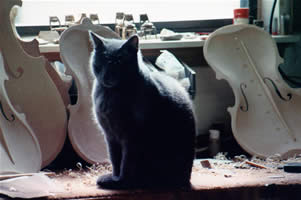
Notice the smoothed out appearances of all these parts. The canoe shape of the arching is apparent as are the ff holes and bass bar which I will detail in the coming pages. Driftwood, the cat, also decided to pose at the same time for his portrait.
